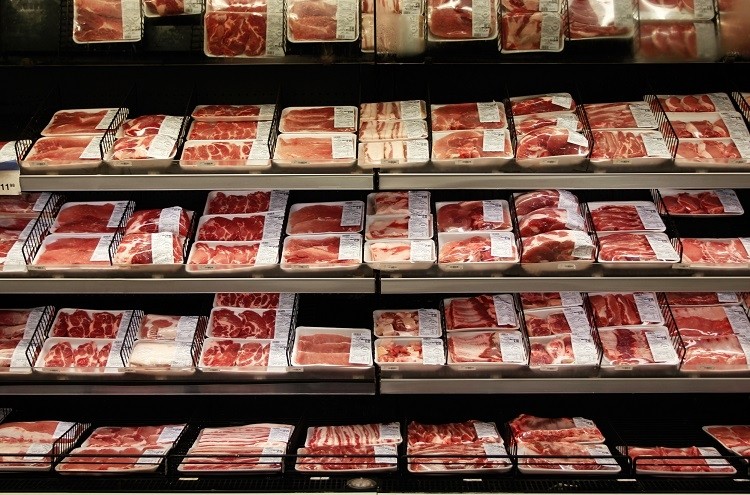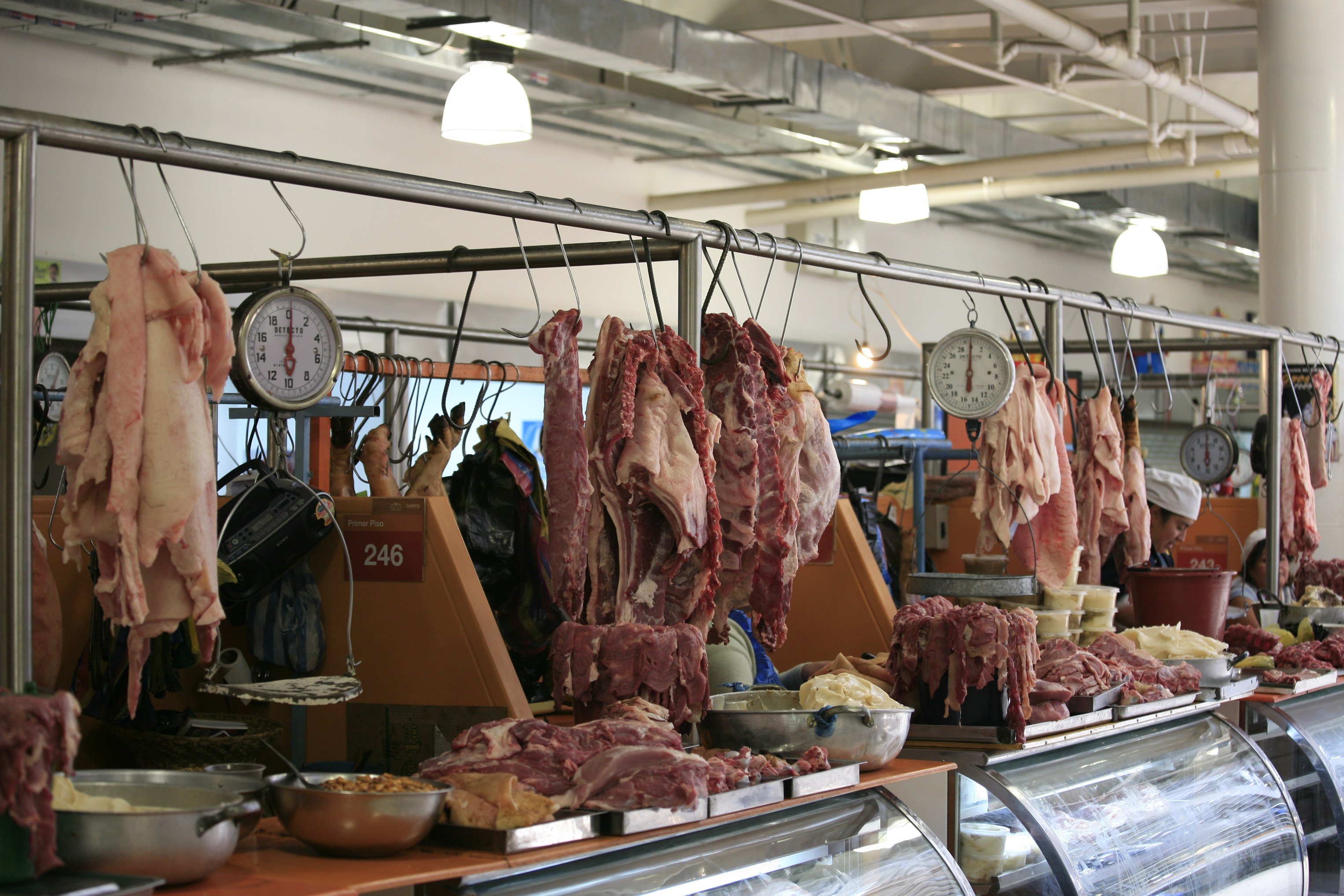What Makes Bagley Farms Meat Market Edwardsville IL Attract Attention for Meat Lovers
What Makes Bagley Farms Meat Market Edwardsville IL Attract Attention for Meat Lovers
Blog Article
Uncover the Art of the Butcher's Cut in a Modern Meat Market
In the ever-evolving landscape of contemporary meat markets, the butcher's cut has actually transcended its typical origins, merging age-old craftsmanship with modern techniques. Today's butchers are not simply processors of meat; they are knowledgeable craftsmens that highlight sustainability and ethical sourcing. Their competence in picking and preparing cuts tailored to specific culinary needs offers an exceptional dining experience. Yet, what truly establishes the contemporary butcher apart is their ability to build a deeper connection between customers and the beginnings of their meat. Just how do these masters balance custom with development, and what implications does this have for the future of meat intake?
Advancement of Butchery Techniques
The advancement of butchery techniques shows an abundant tapestry of advancement and adjustment driven by improvements in technology, adjustments in consumer demand, and a much deeper understanding of meat science. Historically, butchery was a craft gave through generations, with techniques sharpened over centuries to make the most of return and taste. The industrial change ushered in mechanization, transforming conventional techniques and making it possible for massive processing.
The mid-20th century saw butchery techniques additionally improved by clinical insights into muscle mass biology and meat aging, boosting both inflammation and preference. Technologies like vacuum packaging and refrigeration prolonged product shelf-life, enabling butchers to branch out offerings and boost quality assurance. This duration additionally noted the surge of specialized equipment, such as band saws and meat slicers, which enhanced precision and effectiveness in meat handling.

The 21st century has introduced digital technology into the butchery world. Digital systems currently assist in monitoring animal provenance and optimizing cuts to fulfill specific client preferences. Additionally, a renewal in artisanal butchery has actually emerged, blending traditional abilities with contemporary understanding to satisfy consumers looking for moral and lasting meat choices. This evolution emphasizes a vibrant interplay between practice and technology, conference contemporary needs while protecting the craft's heritage.
Comprehending Meat Cuts
Comprehending the details of meat cuts is vital for both butchers and consumers looking for quality and value. For butchers, exact cuts reflect skill and respect for the craft, making certain minimal waste and optimal yield.

Recognizing muscle composition is important; muscles used more often by the animal tend to be harder and are best fit for slow food preparation approaches, while less-used muscles, like those found in the loin, are extra tender and suitable for grilling or roasting. Knowledge with these distinctions empowers customers to make informed selections, improving their culinary undertakings.
Choosing Quality Meat
Choosing the appropriate meat involves more than simply picking an aesthetically enticing piece from the screen. The art of picking quality meat needs a critical eye and knowledge of certain attributes that symbolize quality and quality.
Secondly, think about the marbling, which describes the white streaks of fat within the muscular tissue. Proper marbling is an essential sign of inflammation and taste, as it melts during cooking, improving the meat's juiciness. Bear in mind, greater marbling typically associates with premium top quality cuts, such as USDA Prime.
Appearance is another crucial element; meat must really feel strong to the touch, not slimed or overly soft. Additionally, bear in mind the fragrance. Fresh meat must have a clean, neutral odor, without any sour or off-putting smells.
Pairing Cuts With Cooking Methods

Conversely, tougher cuts like brisket and chuck roast are abundant in collagen, which damages down into gelatin when prepared gradually. These cuts are suitable for braising or slow roasting, permitting the meat to tenderize gradually and create deep, complex flavors. In a similar way, cuts such as short ribs and pork shoulder get on well with slow-cooking approaches, where expanded cooking times transform their durable appearances right into succulent meals.
Lamb shanks and oxtail, which require prolonged cooking to tenderize, are perfect prospects for cooking or slow-moving simmering. These methods coax out rich, hearty flavors while maintaining moisture. By understanding the unique qualities of each cut, cooks and home chefs alike can boost their cooking productions, ensuring each recipe is both pleasing and remarkable.
The Butcher's Role Today
Navigating the evolving landscape of the modern-day meat market, the butcher's function today extends past simple prep work of cuts. Contemporary butchers are cooking artisans, instructors, and advocates for sustainable techniques. They connect the gap in between the farm and the fork by making certain my site honest sourcing, understanding pet husbandry, and prioritizing openness in the supply chain. This shift reflects the expanding consumer need for quality over amount, where provenance and animal welfare are extremely important.
In addition to crafting specific cuts, butchers now involve straight with clients, supplying cooking guidance and customizing selections to fit specific needs and preferences. Their proficiency in meat aging, marbling, and taste accounts encourages consumers to make enlightened decisions, enhancing their cooking experiences. This customized solution exhibits the butcher's evolving function as a relied on consultant in the kitchen area.
In addition, butchers are critical in lessening waste, making use of whole animals to produce varied items such as sausages and supplies. This thorough approach not only appreciates the pet yet also aligns with modern sustainability objectives. By doing this, the contemporary butcher symbolizes both practice and technology, adapting to an ever-changing market while preserving the creativity and stability of their craft.
Final Thought
Mastery in understanding varied meat cuts and high quality indicators empowers butchers to give enlightened suggestions, straightening certain cuts with ideal cooking approaches. By honoring historic methods while welcoming modern needs, the butcher's role continues to be essential in today's sophisticated YOURURL.com meat market.
Report this page